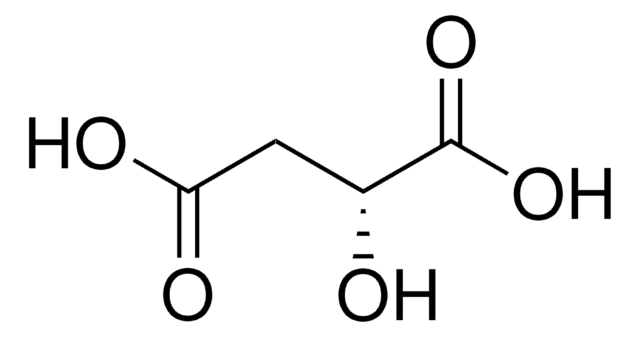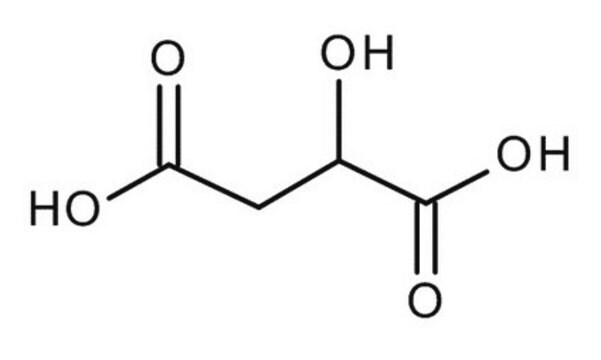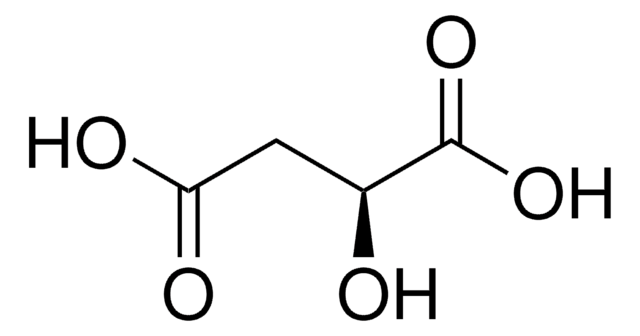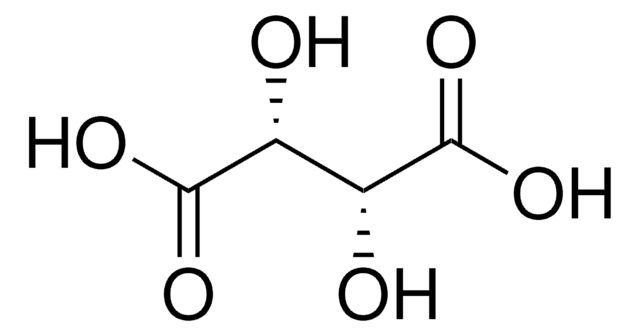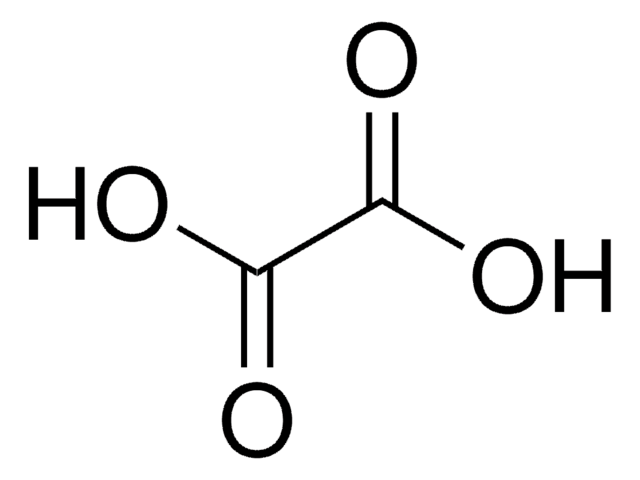94916
DL-Apfelsäure
analytical standard
Synonym(e):
(±)-2-Hydroxysuccinsäure, DL-Hydroxybutandisäure
About This Item
Empfohlene Produkte
Qualität
analytical standard
Qualitätsniveau
Dampfdichte
4.6 (vs air)
Dampfdruck
<0.1 mmHg ( 20 °C)
Selbstzündungstemp.
644 °F
Haltbarkeit
limited shelf life, expiry date on the label
Konzentration
95.0-105.0 wt. % (NaOH 0.1M, Titration)
Methode(n)
HPLC: suitable
gas chromatography (GC): suitable
mp (Schmelzpunkt)
131-133 °C (lit.)
Löslichkeit
H2O: soluble 646.6 g/L at 20 °C
Anwendung(en)
cleaning products
cosmetics
flavors and fragrances
food and beverages
personal care
Format
neat
Lagertemp.
2-8°C
SMILES String
OC(CC(O)=O)C(O)=O
InChI
1S/C4H6O5/c5-2(4(8)9)1-3(6)7/h2,5H,1H2,(H,6,7)(H,8,9)
InChIKey
BJEPYKJPYRNKOW-UHFFFAOYSA-N
Suchen Sie nach ähnlichen Produkten? Aufrufen Leitfaden zum Produktvergleich
Allgemeine Beschreibung
Find all available reference materials for compounds listed in 10/2011 here
Anwendung
Signalwort
Warning
H-Sätze
Gefahreneinstufungen
Eye Irrit. 2
Lagerklassenschlüssel
11 - Combustible Solids
WGK
WGK 1
Flammpunkt (°F)
397.4 °F
Flammpunkt (°C)
203 °C
Hier finden Sie alle aktuellen Versionen:
Besitzen Sie dieses Produkt bereits?
In der Dokumentenbibliothek finden Sie die Dokumentation zu den Produkten, die Sie kürzlich erworben haben.
Kunden haben sich ebenfalls angesehen
Protokolle
Separation of Pyruvic acid, United States Pharmacopeia (USP) Reference Standard; Tartaric acid, United States Pharmacopeia (USP) Reference Standard; Citric acid, United States Pharmacopeia (USP) Reference Standard; Malic acid, United States Pharmacopeia (USP) Reference Standard; L-Pyroglutamic acid, ≥99.0% (T); Lactic acid, United States Pharmacopeia (USP) Reference Standard; Acetic acid, ≥99.99% trace metals basis; Succinic acid, United States Pharmacopeia (USP) Reference Standard
Unser Team von Wissenschaftlern verfügt über Erfahrung in allen Forschungsbereichen einschließlich Life Science, Materialwissenschaften, chemischer Synthese, Chromatographie, Analytik und vielen mehr..
Setzen Sie sich mit dem technischen Dienst in Verbindung.
